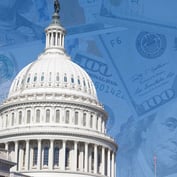What You Need to Know
- Advisors should reassure clients that the proposed tax changes most likely will be altered.
- With the bull market, many portfolios may have concentrated risk that needs to be trimmed.
- Charitable donations are a good way to reduce tax liability and portfolio risk.
A reminder from tax and retirement experts: There are many miles to go before any of the tax changes the Biden administration proposed this week become a reality. And even if everything is passed as proposed, which is highly unlikely, many of these changes won’t affect most retirees, they say.
To get some perspective, we caught up with Christine Benz, Morningstar’s director of personal finance, on Thursday. We asked about how retirees may be affected by a rise in the top capital gains rate to 39.6% for those earning $1 million or more a year.
We also wanted to know how retirees could be affected by the proposed change to the step-up in basis, which allows heirs to use the market value of assets — including stocks and bonds — at the time of inheritance instead of the actual purchase price, as the cost basis for capital gains when sold.
Under the plan, only the first $1 million in assets would be eligible for the step-up in basis. (Charitable donations and some family businesses and farms would have certain exemptions).
Benz cautioned that advisors and their clients should not “put the tax cart in front of the horse,” as there may be other issues they need to pay attention to, especially in “this late stage of the bull market,” she said.
“[The tax proposal] is a wake-up call to revisit highly appreciated positions in a portfolio. Even if you wouldn’t be on the hook for higher taxes, people may have big positions in stocks: employer stocks, inherited stocks.
“A lot of these positions are adding risk to the portfolio, so especially given that we find ourselves in a pretty low tax regime for capital gains … [investors] should see if [they] can’t do a little bit of trimming to take some risk out of a portfolio,” she said.
Concentrated positions are a starting point, she said, adding that growth stocks have had a good run and should be repositioned or trimmed. Younger investors may want to get into a globally diversified equity or index fund.
And older investors? “They should look at whether de-risking into lower risk assets makes sense,” she said. These “hiding-in-plain-sight appreciated equity holdings” can be where retirees can pick up some cash flow for a few years or “obviate the need to look for additional income producers.”








 April 30, 2021 at 12:18 PM
April 30, 2021 at 12:18 PM












 Copyright © 2024 ALM Global, LLC. All Rights Reserved.
Copyright © 2024 ALM Global, LLC. All Rights Reserved.